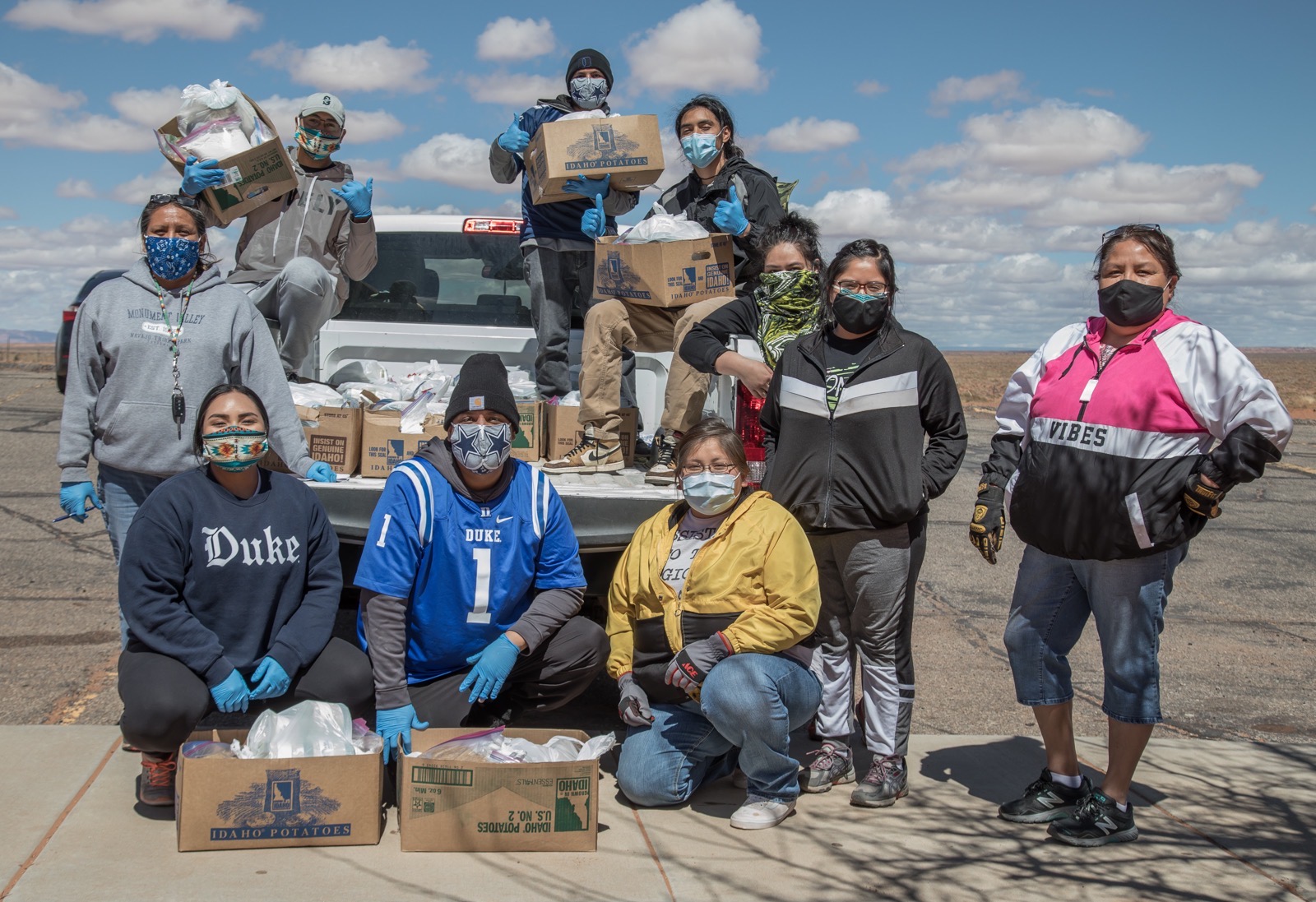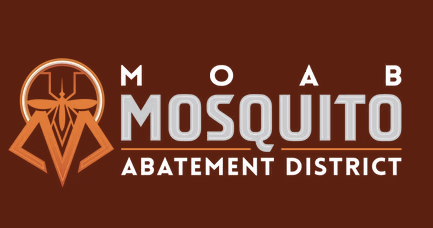Some information may be outdated.
Community members in Bluff have banded together to help their most vulnerable members during the coronavirus pandemic, spending over $10,000 a week to provide supplies to those isolated, and sometimes driving over six hours to deliver groceries.
In just a few short weeks, the Bluff Area Mutual Aid (BAMA) group has mobilized dozens of volunteers, raised tens of thousands in funds, and partnered with several other nonprofits and aid groups to try to ease the hardships caused by social distancing measures, closures, and illness.
“Mutual aid has really stepped up,” said Bess Bennett, who lives just outside of Bluff. Bennett pointed out that many in the community fall into at-risk groups and have limited mobility to get food and other supplies.
“Individuals who fall into the very slim category of healthy young folks that we’ve got in the area have done a great job of offering mutual aid,” she said.
While restrictions on travel, gatherings, and businesses have slowed all sectors of the economy, tourism has been particularly hard hit, as Moab residents are acutely aware. San Juan County, too, is feeling the impacts of the halt on tourism.
“The tourism cuts here have been felt pretty deeply by the greater community,” said Amanda Podmore, one of BAMA’s organizers and a Bluff resident. “Tourism is one of our biggest sources of income and biggest slices of the economy.”
She referenced a report by Headwaters Economics, a nonprofit research group that gathers data with the goal of using that information to improve community development and land management decisions. According to reports by that organization, in 2016, tourism and travel accounted for 35.5% of jobs in the county.
“The hit on tourism has left a lot of folks unemployed,” Podmore said.
Organizing mutual aid
The group has partnered with Twin Rocks Trading Post and Cafe, a local Bluff business, to help find food and supplies, as well as have space to assemble the aid boxes. The cafe has been closed for business since late March, so the floor space is available for the volunteer effort.
Volunteers assemble boxes filled with staple foods like flour, rice, eggs and pasta, as well as fresh produce like potatoes and onions, and portions of meat. They also include household cleaning supplies and hygiene needs such as feminine products and diapers, if needed. Then they use their own vehicles to bring the boxes to their recipients.
“We have a really great volunteer-safety protocol to help us keep our vehicles and our people and the people we’re delivering to all safe,” said Podmore, who serves as the aid request coordinator for the organization.
Volunteers wear masks and gloves and disinfect their vehicles before loading aid boxes inside.
“We’ve had to get creative. We’ve had to make our own bleach cleaning mixtures, and we’re relying on volunteers in Bluff to sew handmade masks for us to use,” Podmore said, adding, that delivery people wear personal protective equipment “so that the risk of COVID transmission is really, really low.”
Volunteers have traveled as far as Navajo Mountain to make deliveries, a 6-hour round trip from Bluff.
Partners and support
With the help of the Rural Utah Project, a nonprofit dedicated to empowering rural Utahans through training, education, voter registration, and issue advocacy, BAMA set up an online crowdfunding page to help pay for food and supplies for Bluff-area residents in need. As of April 13, they had raised nearly $21,000 of a $30,000 goal.
Podmore’s role is to prioritize which aid requests are most urgent, taking into account factors including where the family is located, if there are children in the household, and whether there are people with a high risk of severe infection from the coronavirus.
As of April 12, the group reports having made deliveries to over 800 people in Bluff and the surrounding areas, spending an average of $10,000 a week.
At that rate of spending, the organization could not sustain their efforts; however, they’ve partnered with other aid groups working in the region for extra support. The Navajo & Hopi Families Relief Fund is providing similar services to the more than 40 chapters across the Navajo Nation. That group’s GoFundMe page, as of April 12, had reached almost $600,000 of the listed $750,000 goal.
BAMA serves the seven chapters of the Navajo Nation that are within Utah, and shares resources with the Navajo & Hopi Relief Fund for those groups.
Other partners include Utah Navajo Health Systems, The Bluff Fort, Canyon Country Discovery Center and Utah Diné Bikéyah.
Inequality makes pandemic impacts worse
San Juan County also has high levels of poverty. In 2017, the Headwaters Economics report found that 10.4% of white people in San Juan County lived below the national poverty level. But Podmore noted that number jumped to 42.6% in the Native American community.
This elevated poverty level on the Navajo Nation means many people who reside there are living without the utilities and services many Americans consider basic necessities. Homes may lack running water or electricity. These deprivations compound the difficulties brought on by the pandemic.
For example, state and federal aid packages offer expanded unemployment benefits during this time, but it’s difficult to apply without access to the internet. For those who rely on public libraries for internet access, the closure of public buildings has made that access even more difficult. Many homes on the reservation are heated by burning wood; the early spring nights are still cold, and firewood is another necessity difficult to obtain under shelter-in-place orders.
“Trying to deliver massive amounts of firewood to people has been really logistically challenging,” said Podmore.
Another challenge, especially for volunteers making aid deliveries, is that many homes on the Navajo Nation still don’t have addresses. The Rural Utah Project has been working to assign “Google plus codes” to all residences on the Navajo Nation to help tribe members exercise their voting rights. However, many homes still lack an address.
Aside from the hurdles of poverty, some tribe members who practice Native traditions have a need for certain items that take more time and effort to prepare. Kristen Ramirez-Marsh is the Executive Director of Full Circle Intertribal Center in Moab. The nonprofit, which focuses on nurturing Native American culture, has had to modify or cancel many programs for the time being.
In the meantime, Marsh is making aid boxes for 13 tribal elders who live in Moab, including herbs and medicines that Marsh has collected in a traditional way along with prayers and offerings.
“It’s my time and it’s a gift, and that elder will know that it was harvested correctly,” said Marsh. “It’s a genuine process that means a lot.”
Public health challenges on the reservation
An April 8 press release from the Navajo & Hopi Families Relief Fund also emphasizes the additional challenges the Navajo Nation faces in managing the public health crisis.
“The Navajo Nation has 12 Indian Health Service facilities with a total of 170 hospital beds, 13 ICU beds, 52 isolation rooms, and 28 ventilators. Given the circumstances, the few medical facilities and resources on the Nation are likely to be severely overwhelmed in a short amount of time,” the release notes, adding that “tribal communities have high numbers of elderly, diabetic, asthmatic, and cancer-afflicted individuals, putting them at a substantially elevated risk of requiring hospitalization for COVID-19.”
The coronavirus infection has been spreading on the reservation, with 698 reported cases of COVID-19 on the Navajo Nation as of this weekend. Determined to protect their members and avoid overwhelming their limited health care facilities, the Navajo Nation has implemented strict social distancing measures, including a shelter-in-place order and a weekend curfew.
“Orders to ‘shelter in place’ and remain at home, however, are…placing additional strain on already under-resourced communities,” the press release goes on, noting that there are 16 grocery stores and food markets on the Navajo Nation and Hopi reservations to serve almost 200,000 people.
“I’m so fraught because there are so few resource points for anybody to go to in the first place,” agreed Bennett, who lives on the border of the Navajo Nation. “Now, everything’s shut down and we’re all just funneled to these same areas for what we need.”
In spite of these daunting numbers, leaders of the Navajo & Hopi Family Relief Fund have hope that the aggressive measures to stop the spread of the virus will be effective, and they take pride in the aid work they are providing, distributing food, water, and supplies to Navajo and Hopi communities throughout the region.
“I thought this would make just a small impact,” said the fund’s founder, Ethel Branch, who is also the former Navajo Nation Attorney General. “But the great love and care that the public has for our communities, and their sense of justice to correct the inequities that exist in Indigenous communities, has morphed this effort into a movement.”
As of April 8, the group has received more than 4,500 requests for support and mobilized numerous volunteers to provide direct relief to over 850 families in over 21 communities, according to the press release.
A grassroots mutual aid group helps those in need
“I thought this would make just a small impact, but the great love and care that the public has for our communities, and their sense of justice to correct the inequities that exist in Indigenous communities has morphed this effort into a movement.”
– Ethel Branch
Appreciate the coverage? Help keep local news alive.
Chip in to support the Moab Sun News.




